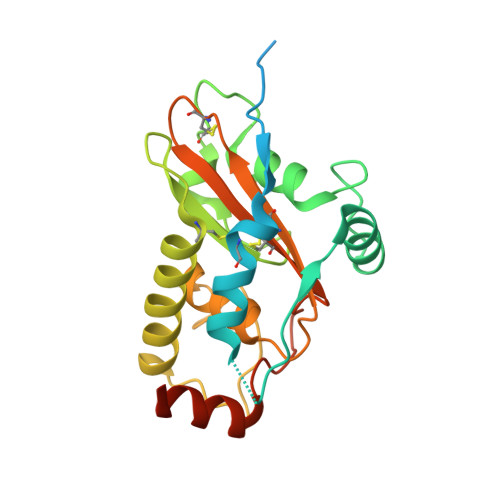The structure of a major surface antigen SAG19 from Eimeria tenella unifies the Eimeria SAG family.
Ramly, N.Z., Dix, S.R., Ruzheinikov, S.N., Sedelnikova, S.E., Baker, P.J., Chow, Y.P., Tomley, F.M., Blake, D.P., Wan, K.L., Nathan, S., Rice, D.W.(2021) Commun Biol 4: 376-376
- PubMed: 33742128
- DOI: https://doi.org/10.1038/s42003-021-01904-w
- Primary Citation of Related Structures:
6ZZB - PubMed Abstract:
In infections by apicomplexan parasites including Plasmodium, Toxoplasma gondii, and Eimeria, host interactions are mediated by proteins including families of membrane-anchored cysteine-rich surface antigens (SAGs) and SAG-related sequences (SRS). Eimeria tenella causes caecal coccidiosis in chickens and has a SAG family with over 80 members making up 1% of the proteome. We have solved the structure of a representative E. tenella SAG, EtSAG19, revealing that, despite a low level of sequence similarity, the entire Eimeria SAG family is unified by its three-layer αβα fold which is related to that of the CAP superfamily. Furthermore, sequence comparisons show that the Eimeria SAG fold is conserved in surface antigens of the human coccidial parasite Cyclospora cayetanensis but this fold is unrelated to that of the SAGs/SRS proteins expressed in other apicomplexans including Plasmodium species and the cyst-forming coccidia Toxoplasma gondii, Neospora caninum and Besnoitia besnoiti. However, despite having very different structures, Consurf analysis showed that Eimeria SAG and Toxoplasma SRS families each exhibit marked hotspots of sequence hypervariability that map to their surfaces distal to the membrane anchor. This suggests that the primary and convergent purpose of the different structures is to provide a platform onto which sequence variability can be imposed.
- Department of Molecular Biology and Biotechnology, Krebs Institute for Biomolecular Research, The University of Sheffield, Sheffield, UK.
Organizational Affiliation:

















